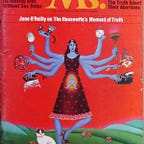From Optimism to Pessimism: the dismal scientists’ journey
Adam Smith’s world was foaming with opportunities brought about the second stage of capitalism. His vision of “poverty balancing” was so perfect that when he said society was bound to achieve balance, the society of that day believed him.
The capitalist would accumulate their profits and so they did. Producers indulged in industries that had higher profits until supply crossed demand and their prices return to normal levels. In the same way, the labor market was organized. Supply would balance the demand and incidentally, the poverty in the society would balance the wealth.
So bright was his way of expression, even though he is known to belabor on without a point, that when he justified the vicious cycle of poverty as a mechanism for balancing rising wages, it was readily accepted- the laws of population and accumulation.
This changed 22 years after the wealth of nations was published in 1776. The balance between wealth and poverty that smith had envisioned did not come about. Nonetheless, his vision formed the first school of thought in economics- the classical school.
Malthus and Ricardo are considered the chief spokesman for the classical school. I guess primarily because these are the first successors that take on the discourse of economic problems. The problem with the discourse between Malthus and Ricardo was that they were both always talking from a different perspective. While Ricardo always questioned distribution- Who gets what and why? — Malthus asked what did we have left?
In 1798, Malthus, son of an honorable academic, published his essay on the gloomy workings of population growth. Through statistics, he proved that if unchecked, the population in the UK would grow geometrically and double its size in 25 years. Based on a consensus in the US that confirmed that the population in the US had doubled in the last 25 years. As for food production, which would grow arithmetically, the picture of the future became painfully obsolete.
This also did not come about. Because of the advancements in technology. However, it is important to consider some of Malthus’s other inclinations. He was superbly against the working class, whom he denounced as hopeless. The working class to him would always live at the subsistence level because of their lack of moral restraint. He is described by his biographer as the “best-abused man of his time”.
Was Malthus right about the damned future of the labor class? In some ways he was. Although technological advancements today have made it possible to feed as many mouths as there are and reduce the mouths to feed simultaneously. Bringing them to a balance. There is yet to be a sense of awareness among the labor class about their own political and private rights. Later in the study of Karl Marx and John Keynes, it will be revealed that the labor class would somewhat become more aware of their plight and will hence attempt to change it. At this point, it is important to come back to Ricardo’s distribution problems. The Ren-seeking landlords bring about imbalances in the earnings of the labor and capitalist class. It was due to this distribution problem, coupled with the Malthusian doctrine, that the economist became the dismal scientist- famously coined by Thomas Carlyle.
Both these visionaries are alleged with turning advocates of progress into reactionaries.
Whether they are guilty as charged or not, one thing is for sure, these first and foremost economists set the course for all of us. Even for the female economists.
In this context, it would be a shame to not mention Maria Edgeworth- the first known woman to express opinions on the economy.
The author of Castle Rackrent, based on a family that spends away its fortunes, became the popular literature to describe the oppressing behavior of the land-owning class. She was the daughter of an economist and assisted him in managing the estate. Living in rural Ireland and being a part of the management of her father’s estate, she became knowledgeable in domestic rural life and the peasant class. She had a knack for observation and penning that observation to paper. Her later works were recognized later during the feminist revolution of the 1960s.
In all of the pessimism of the 18th and 19th centuries, Maria Edgeworth’s literature was somehow the closest to logic. However, it wasn’t until a century later that female economists would get recognized in the field. Only as numbers. Not heroes.
